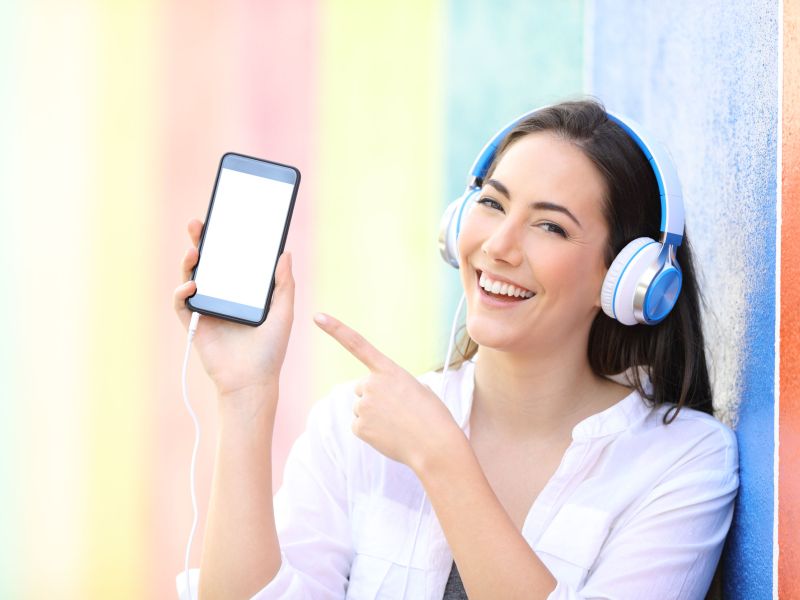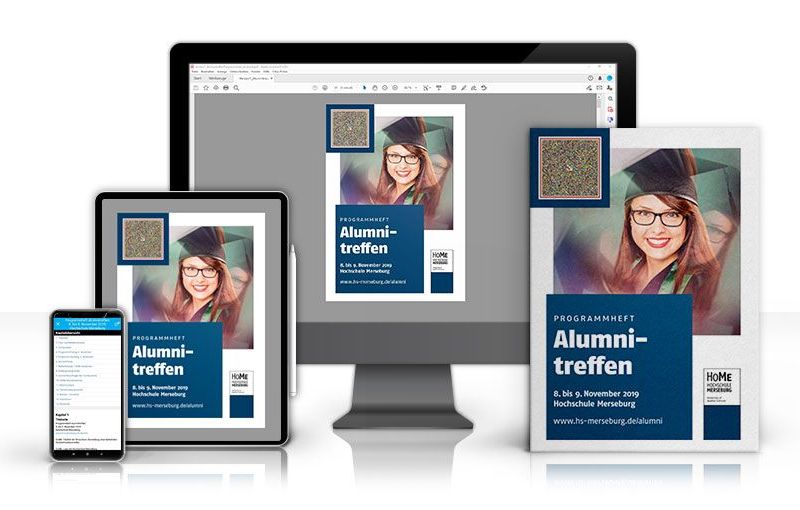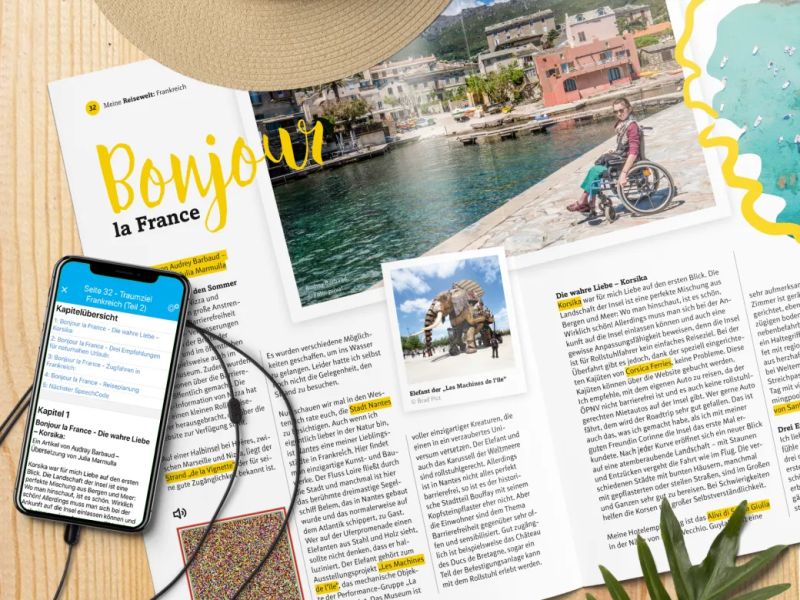Accessible print media is no longer an impossibility. And there are many good reasons to make newspapers, magazines and brochures accessible.
The term “Accessibility” makes us involuntarily think first of people with disabilities – a supposedly very small target group.
However, baarier-free and easier accessibility generally means better usability, for all target groups. A good example are floor-level showers, which are now part of the upscale standard. They were originally developed for wheelchair users.
So whether it’s children, the 50+ generation, people with disabilities, or anyone who can’t read well or simply doesn’t like to, they all benefit from accessible print media. And as new readers, they also increase the reach of the publication!

Listening instead of reading or “why podcasts are so successful” – accessibility is more customer-friendly!
Creating accessible print media requires a lot of know-how.
In terms of content, it is generally recommended to use language that is as easy to understand as possible. Whether content should be offered in “easy language” for people with cognitive impairments or reading difficulties depends on the medium and its target groups.
For graphic design, there are clear standards regarding colors, contrasts, spacing, fonts and font sizes. This is because these are very important for people with visual impairments to be able to read texts at all.
For blind people, however, this is not sufficient. They need a tactile or audible alternative to writing.
For texts, the only tactile solution is Braille. However, only 20% of all blind people can read Braille. And Braille takes up much more space than writing. Therefore, it is a very difficult solution for newspapers or magazines.
A good way to provide accessible print media is online. The website or a PDF is designed in such a way that it can be read aloud correctly by “screen reader” software using voice assistants. There are also already precise guidelines for this according to the European Accessibility Act.

This is what an accessible brochure looks like
Older people in particular often do not have Internet access and are not able to operate a computer blindly.
SpeechCode is ideal for these people: Simply scan the colored Speech Code with the free app and the text is read aloud. Without the need for the Internet, because the entire content is in the code itself. This makes data transfer not only fast, but also secure – always and everywhere!
A good example of accessible print media with SpeechCode is the magazine “Meine Reisewelt” (My Travel World).

Meine Reisewelt: Scan SpeechCode and listen to or read content in larger font on your smartphone.
Why accessible information in text AND speech can increase the reach of your message by up to 50 %.
read moreWhy the generation 50+ is such an important target group
read moreAudible manuals have many advantages over printed editions
read moreHow to reach people with reading difficulties:
read moreUsability is key for success. Therefore Universal design makes sense. Find 10 examples for best usability here
read moreHow print media gain more reach with accessiblity
read moreZeroCon23 - THE event for the accessibility topic
read moreWhy Universal Design instead of special solutions is the right approach for inclusion
read moreShowcase of an accessible and inclusive hotel
read moreWhy the 2-senses principle is important and how to implement it
read moreFind out how Siri and Alexa promote sustainability in marketing
read more